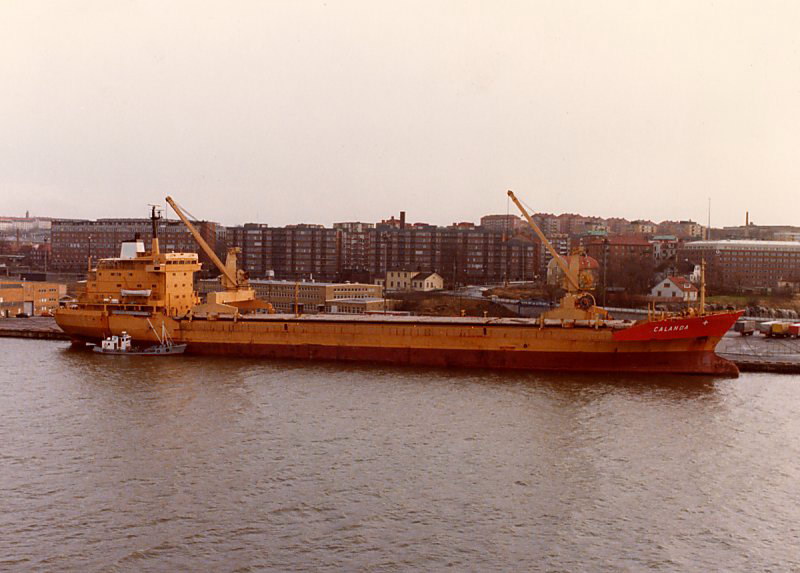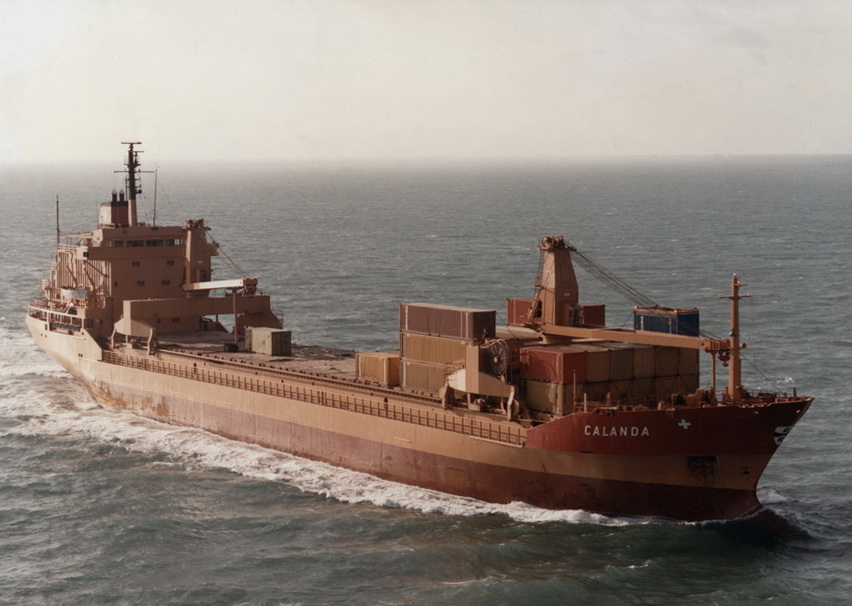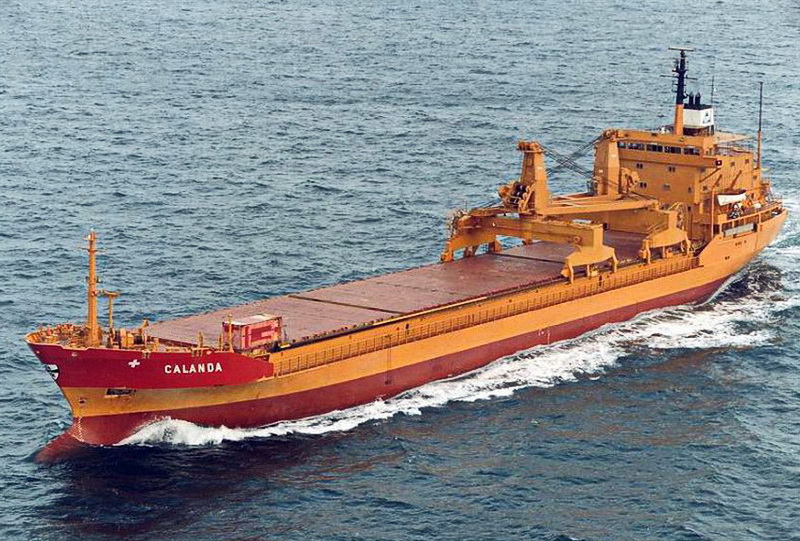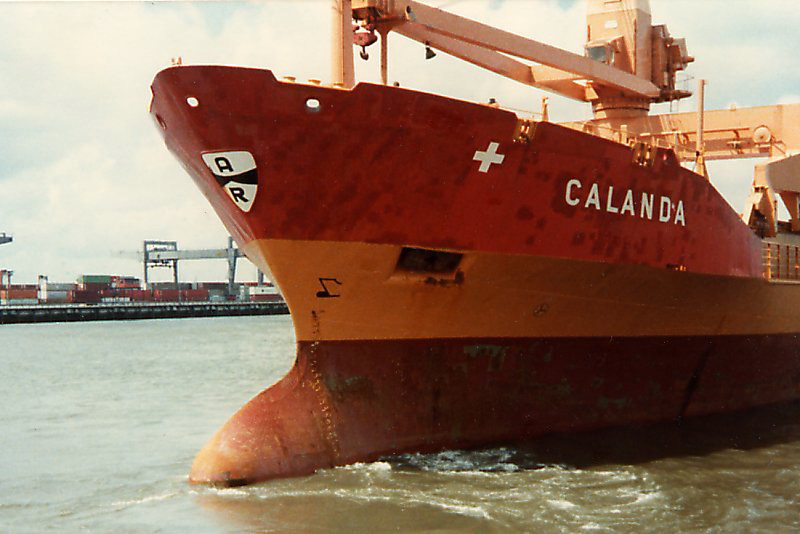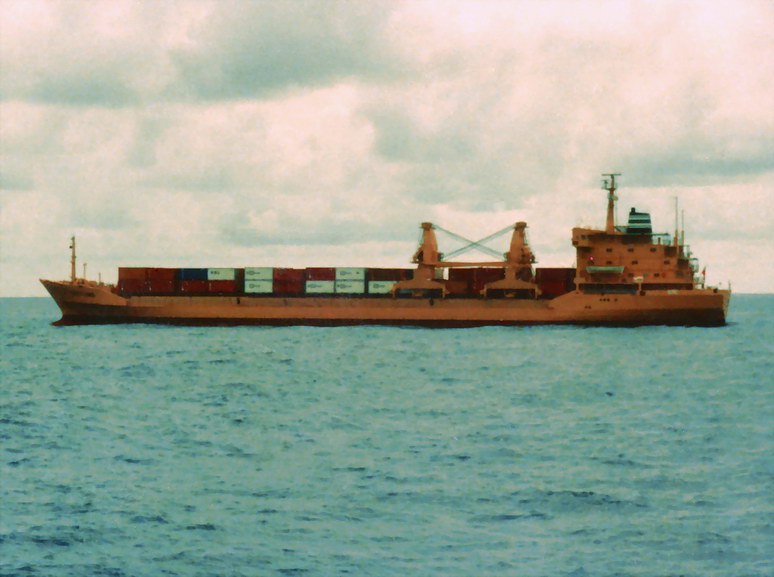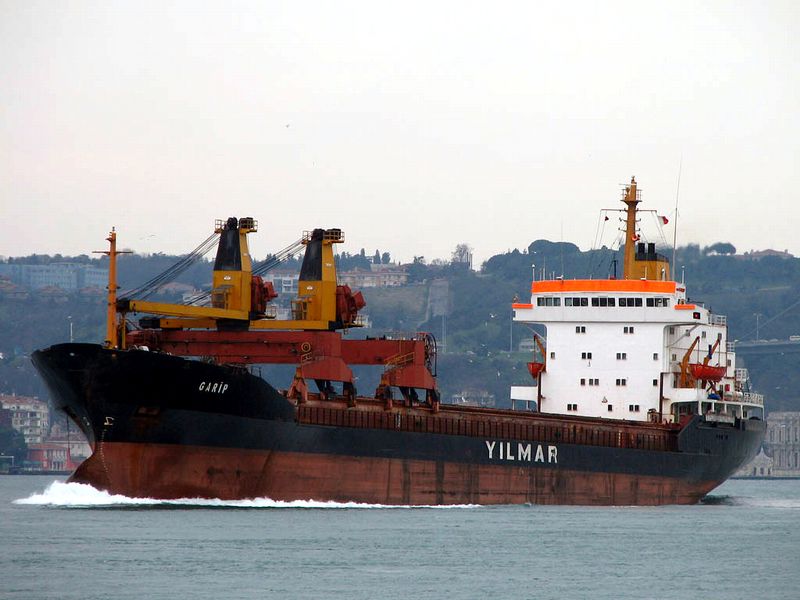
CALANDA
Lloyd's Register / IMO No.: 7360708
Schiffstyp / Ship's type: Motor / Stückgutfrachter / General Cargo Vessel
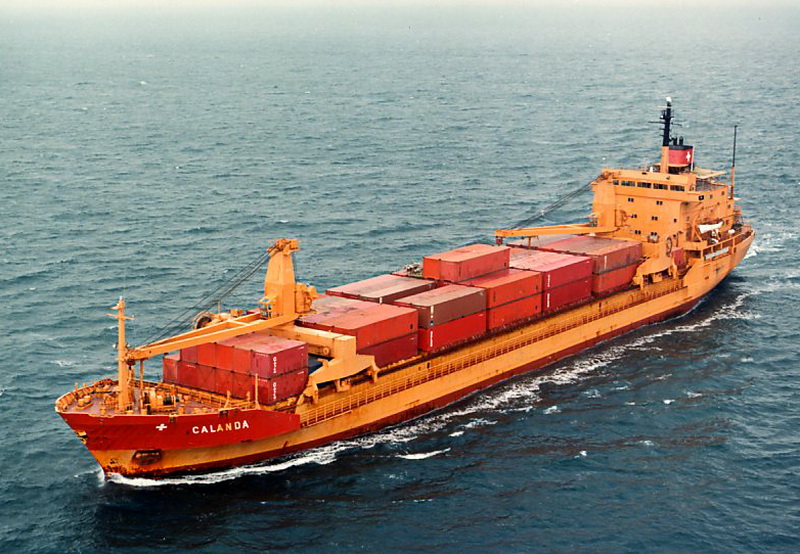
![]()
Bau / Construction
| Bauwerft / Shipyard: | Gebr. Schürenstedt KG Schiffs- und Bootswerft, Bardenfleth / Weser - West Germany | ||
| Bau Nr. / Hull / Yard No.: | 1364 | Baujahr / Year of built: | 1975 |
| Kiellegung / Keel laying: | 00.03.1974 | Stapellauf / Launching: | 12.11.1974 |
| Ablieferung / Delivery: | 25.02.1975 | ||
![]()
Reeder - Manager / Shipping company - Manager
| Eigner / Registered owner: | Alpina Reederei AG, Basel | ||
| Reeder / Shipping Company (Manager): | Schweizerische Reederei und Neptun AG (SRN), Basel | ||
| Tech. Management / Technical Mgmt.: | Schweizerische Reederei und Neptun AG (SRN), Basel | ||
| Management von / from: | 04.12.1979 | Management bis / until: | 24.06.1986 |
| Registerhafen / Homeport: | Basel | Flagge / Flag: | Schweiz / Switzerland (CHE) |
| Rufzeichen / Call sign: | HBFD | CH-Register-Nr. / Official No.: | 109 |
| Registrier Datum / Date: | 04.12.1979 | Register Streichung / Deletion: | 24.06.1986 |
| Verbleib / Fate: | Verkauf nach Frankreich / Sold to France | ||
![]()
Vermessung / Tonnage
| BRT: | 7'579 | Länge / Length: | 143.82 | Meter | TEU: | 458 |
| NRT: | 4'977 | Breite / Breadth: | 18.57 | Meter | Passenger: | - |
| DWT: | 10'089 | Tiefgang / Draft: | 7.54 | Meter | Besatzung / Crew: | 21 |
| Lightship tons: | 4'222 | Tiefe / Depth: | 10.16 | Meter | ||
| Ladegeschirr / Cargo gear: | 2 Portalkräne mit 30-ton / 2 Gantry cranes of 30 tons SWL (Safe Working Load) | |||||
![]()
Maschine / Machinery
| Maschinen-Typ / Engine type: | 2x 6-Cyl. 6L40/54A MAN |
| Maschinenhersteller / Engine builder: | Maschinenbau Augsburg-Nürnberg (MAN), Augsburg |
| Leistung / Power: | 6'700 PS / HP |
| Geschwindigkeit / Speed: | 14.5 Knoten / Knots |
| Antrieb / Propulsion: | 1 Verstellpropeller / Controllable pitch propeller |
| Bugstrahlruder / Bowthruster: | 1 CP thruster (fwd) 298kW (405bhp) |
![]()
Registrierte Schiffsnamen / Registered ship's names
| Datum / Date | Schiffsname / Name | Heimathafen / Homeport |
| 25.02.1975 | Skotland | København |
| 00.10.1979 | Iren | Skårhamn |
| 04.12.1979 | CALANDA | Basel |
| 15.12.1982 | SOFATI CONTINENT | Basel |
| 14.02.1983 | CALANDA | Basel |
| 24.06.1986 | Calanda IV | Limassol |
| 01.05.1987 | Trade Bliss | Panama |
| 29.05.1997 | Orient Bliss | Panama |
| 01.04.1999 | Orient Bliss | Kingstown |
| 00.03.2000 | Garip | Phnom-Penh |
| 00.09.2004 | Garip | Bratislava |
| 00.08.2010 | Garip | Kingstown |
| Verbleib des Schiffes / Fate of vessel: | Juni 2013 Verkauf zum Verschrotten / Sold for scrap |
![]()
Schiffsgeschichte

Bei Gebr. Schürenstedt KG Schiffs- und Bootswerft, Bardenfleth / Weser (Bau Nr.: 1364) im März 1974 auf Kiel gelegt und am 12.11.1974 vom Stapel gelaufen als SKOTLAND. Am 25.02.1975 an die Eigner Det Dansk- Fransk D/S, København abgeliefert. Management: H. E. Hahn-Petersen, København. Der Frachter fuhr unter der Flagge Dänemarks und war in Kopenhagen beheimatet (Rufzeichen: OURW). Das Schiff besass die höchste finnische Eisklasse und hatte drei Laderäume. Als Ladegeschirr dienten zwei elektrische Portalkrane von je 30 Tonnen Tragkraft (die auf einem Portal montierten Krane konnten an den Ladeluken zu jeder gewünschten Position entlang rollen). Sie mussten auch die ungefähr 22 Tonnen schweren Lukendeckel anheben und stapeln. Das Schiff hatte zwei medium-speed, 4-takt Dieselmotoren von MAN (2 x 6-Zylinder 6L40/54A) die über eine Kupplung mit einem gemeinsamen Reduktionsgetriebe verbunden waren und eine Schwanzwelle mit einem Verstellpropeller von KAMEWA antrieb. Die Maschinen konnten nur leichtes Schweröl von 60 cSt verbrennen, eine höhere Viskosität ergab viele Probleme mit den Einspritzdüsen. Dieses leichte Schweröl verteuerte natürlich auch die Rechnung für den Bunker. Im Oktober 1979 kaufte die Firma O T Rederierna, Skårhamn, Schweden das Schiff, es wurde in IREN umbenannt und kommt für kurze Zeit unter schwedische Flagge. Die Reederei O T plante einen Umbau zum Produktentanker, aber offensichtlich liess sich das nicht bewerkstelligen und die Firma verkaufte das Schiff gleich weiter an Alpina Reederei AG, Basel. Die CALANDA und ihr Schwesterschiff MALOJA waren die beiden letzten Schiffe die von der Schweizerischen Reederei erworben und zusammen in Göteborg, Schweden übernommen wurden. Am 04.12.1979 wurde die SKOTLAND umbenannt in CALANDA und um 12:00 wurde die Schweizer Flagge hochgezogen (Offizielle Nr.: 109, Rufzeichen: HBFD). Der erste Kapitän war Hermann Schildknecht. Kapt. Schildknecht’s Kapitänsbericht erwähnt als ersten Auftrag eine Reisecharter für die NNSL, Nigerian National Shipping Line von Rouen nach Lagos und zurück. In Ballast fuhr die CALANDA nach Rouen, Frankreich um die erste Ladung an Bord zu nehmen. Schwere See behinderte die Reise und der Verstellpropeller gab den Ingenieuren auch einige Kopfzerbrechen. Am 10.12.1979 wurden in Rouen 315 Container geladen, total 2'171 Tonnen. Der Wetterbericht verhiess nichts Gutes, Stürme waren angesagt. In der Falmouth Bay legte sich das Schiff für eine Nacht unter Landschutz, aber am nächsten Morgen konnte die Fahrt fortgesetzt werden. In der Biscaya herrschte wieder Sturm mit Windstärke 9 bis 10, dann besserte sich das Wetter. Die Laschungen der Container mussten ständig kontrolliert werden. Da die Charterer keinen Bunker bestellt hatten, musste Daker angelaufen werden. Am Vormittag des 19.12.1979 übernahm man 340 Tonnen Schweröl. Am nächsten Tag entdeckte man schon die ersten zwei blinden Passagiere, zwei Gambier die sich im Laderaum 1 eingeschlichen hatten (vermutlich dachten Sie, der Dampfer fährt nach Europa, ins „gelobte Land“). Am Abend des 23.12.1979 erreichte man Lagos und feierte Weihnachten am Anker. Dann endlich am 28.12.1979 konnte an den Liegeplatz verholt werden, die Ladung wurde gelöscht und 265 leere Container für die Rückreise geladen. Während der Ladearbeiten fiel Kran Nr. 1 aus, der Kranauslegermotor musste ersetzt werden. Ein Ersatzmotor, wohl so 250 bis 350 kg schwer, wurde mit einem Mobilkran an Land gesetzt, wo ihn Schiffskran Nr. 2 am frühen Abend anheben konnte und dann von der Maschinencrew eingesetzt wurde. Die Maschinenleute arbeiteten die ganze Nacht durch. Am Nachmittag des 31.12.1979 war der Kran wieder einsatzfähig. Am 02.01.1980 lief die CALANDA aus Lagos aus, zurück nach Rouen. Die Fahrt verlief ereignislos, ausser dass wieder zwei blinde Passagiere in Raum 1 entdeckt wurden. Die zweite Reise im Januar / Februar 1980 führte nach Kanada, eine Winterreise nach Newcastle N.B. und Port Hawkesbury N.S. auf der südlichen Seite des St. Lorenz Golfes. Die CALANDA musste die Strasse von Canso (zwischen Nova Scotia und Cape Breton Island) passieren um dann teilweise mit Eisbrecherhilfe den Ladehafen zu erreichen. Um zum zweiten Ladehafen Port Hawkesbury zu gelangen musste das Schiff um Cape Breton Island fahren, weil der nördliche Eingang zur Strasse von Canso inzwischen vom Eis Blockiert war. Dann über den Atlantik bei schwerem Wetter nach Italien, Savona, Barletta, Monfalcone (beide an der Adria) und zurück nach Livorno, wo das Schiff wieder off-hire ging. Die dritte Reise verlief ereignislos von Livorno nach Genua und wieder zurück nach Livorno, Barcelona über den Atlantik nach New York, Baltimore und Charleston, dann wieder zurück nach Italien, Neapel, Livorno, Genua, Marseille, Neapel und Rotterdam, wo diese Charter am 28.04.1980 endete. Auf einer Fahrt von Bilbao nach Veracruz, Mexiko am 26.11.1981 unter Kapitän Fritz Stegemann befand sich die CALANDA dicht unter der Küste von Florida um den Neerstrom auszunützen, ungefähr 12 Seemeilen von Miami entfernt. Abends um 18:12 wurde ein Mayday-Ruf empfangen, ein Boot mit zwei Männern an Bord wäre am Sinken, dann brach der Radiokontakt ab. Sofort begann die CALANDA mit der Suchaktion, dann konnte man in der Dunkelheit zwei Lichter im Wasser ausmachen. Mit dem Bereitschaftsboot konnten die beiden Männer aus dem Wasser gezogen werden. Die US-Coast Guard schickte einen Kutter, der die Geretteten, sowie den bei der Rettungsaktion verletzten Bootsmann René Walther (bekannt als „Schratt“) aufnahm und an Land brachte. 15.12.1982 für eine kurze Charter mit der kanadischen Sofati Containerlinie, umbenannt in SOFATI CONTINENT und zwei Monate später, am 14.02.1983 wieder auf den alten Namen CALANDA umbenannt. Auf ihrer ersten Reise mit der Sofati-Containerline von Europa nach Montreal, verzögerte schweres Wetter im Atlantik, sowie das Eis auf dem St. Lorenz Strom die fahrplanmässige Ankunft der SOFATI CONTINENT in Montreal. Statt in der letzten Woche des Jahres, erreichte sie Montreal erst am Nachmittag des Neujahrstages 1983 und war somit das erste Schiff das Montreal im neuen Jahr erreichte. Gemäss einer mehr als hundert Jahre alten Tradition erhält das erste Schiff in Montreal jeweils eine Auszeichnung (früher erreichte das erste Schiff Montreal erst im März). Nachher fuhr die CALANDA meistens in Reisecharter. Schon bei der Schweizer Reederei fuhr sie zwischendurch für die Marseille-Fret nach Montreal, nach Guadeloupe, Martinique und Cayenne (Französisch Guyana). In 1986 kaufte Marseille-Fret, Marseille, den ihnen bestens bekannten Frachter. Am 24.06.1986 erfolgte die Übergabe in Antwerpen. In Limassol unter zypriotischer Flagge und neuem Namen CALANDA IV für die Eignerfirma Sally Shipping Co. Limassol registriert (Rufzeichen: C4HV). Das technische Management wird an Columbia Shipmanagement Ltd. Limassol übergeben. Neue Vermessung BRT: 7'679, NRT: 4'977, DWT: 10'250. Am 01.05.1987 verkauft an Trade Bliss S.A. Panama (Management: Wah Tung Shipping Agency Co. Ltd., Hong Kong), in TRADE BLISS umbenannt und in Panama registriert (Offizielle Nr.: 17370-87-CH. Rufzeichen: 3ETV5). 01.04.1995: Das Management wechselt zu Parakou Shipping Ltd. Hong Kong. Am 29.05.1997 in Singapore umbenannt in ORIENT BLISS, jedoch weiterhin unter Panama Flagge. Am 01.06.1997 wird ein Wechsel des Managements an Orient Express Lines Inc., Dubai vermeldet. Am 01.07.1998 wird ein Verkauf an mexikanische Interessenten gemeldet. Darüber gibt es aber keine weiteren Infos, wahrscheinlich eine Falschmeldung. Im Dezember 1998: Das Management wechselt an Lily Maritime Pvt. Ltd., Mumbai. 01.04.1999: Registriert in Kingstown, St. Vincent & The Grenadines, für Winco Maritime Ltd. (Offizielle Nr.: 8024, Rufzeichen: J8VZ2). Nicht umbenannt. Im Jahr 1999 wechselt das Management an Arcadia Shipping Ltd. Mumbai, Indien. Im März 2000: Verkauft an Fiesta Investments Ltd. Phnom-Penh, Kambodscha (Management: Winco Maritime Ltd. Mumbai). Neuer Name GARIP und in Phnom-Penh registriert (Offizielle Nr.: 0074056, Rufzeichen: XUPX3). Im Jahr 2001: Das Management wechselt zu Yilmar Denizcilik ve Ticaret Ltd Sirketi (Yilmar Shipping & Trading), Istanbul. Im Mai 2002: Ankauf durch Molten Maritime Corp. Phnom-Penh. Das Management übernimmt Yilmar Denizcilik ve Ticaret Ltd Sirketi (Yilmar Shipping & Trading), Istanbul. Nicht umbenannt. Im September 2004 wird ein Wechsel unter die slowakische Flagge vollzogen und die GARIP wird in Bratislava registriert (Offizielle Nr.: unbekannt, Rufzeichen: OMJC). Am 07.02.2007 um 05:10h auf der Reise von Nemrut nach Tuapse bei der Insel Marmara in Front von Camalti Point in den Dardanellen auf Grund gelaufen. Am gleichen Tag um 14:00h mit eigener Kraft wieder flottgekommen. Der Schaden am Schiff war als eher klein gemeldet. Die GARIP wurde jedoch zur Inspektion und Reparatur ins Trockendock verholt. Im August 2010 transferiert unter St. Vincent & The Grenadines Flagge, Heimathafen Kingstown (Offizielle Nr.: 10795, Rufzeichen: J8B4322). Nicht umbenannt. In 2013 zum Verschrotten an Izmir Gemi Geri Donusum Ltd. verkauft. Am 27.06.2013 in der Bucht von Nemrut, Türkei vor Anker gegangen und auf den Strand von Aliaga gesetzt. Quellen:
SwissShips, Februar 2024 |
![]()
Historique des navires

Mise en chantier en mars 1974 auprès des ateliers Gebr. Schürenstedt KG Schiffs- und Bootswerft, à Bardenfleth / Weser (n° de construction : 1364) ce navire est lancé le 12-11-1974 sous le nom de SKOTLAND. Le 25-02-1975, il est livré aux propriétaires, la Det Dansk- Fransk D/S, København. La gestion est confiée à la H. E. Hahn-Petersen, København. Le cargo battait pavillon danois et était basé à Copenhague (indicatif radio : OURW). Le navire possédait la plus haute classification finlandaise de glace et disposait de trois cales. Deux portiques électriques de 30 tonnes chacun servaient d'équipement de chargement (les grues montées sur un portique pouvaient rouler le long des écoutilles de chargement jusqu'à la position souhaitée). Elles devaient également soulever et empiler les panneaux d'écoutille lesquels pesaient environ 22 tonnes. Le navire était équipé de deux moteurs diesel MAN, de type semi-lent, des 4 temps (2 x 6 cylindres 6L40/54A), reliés par un accouplement à un réducteur commun, entraînant un arbre avec hélice à pas variable de type KAMEWA. Ces moteurs ne pouvaient brûler que du fioul lourd léger de qualité 60 cSt ; une viscosité plus élevée entraînant de nombreux problèmes au niveau des injecteurs. Ce fioul lourd léger renchérissait bien entendu la facture de carburant de soutes. En octobre 1979, la société O T Rederierna, Skårhamn, en Suède, acheta le navire, qui fut rebaptisé IREN et passa brièvement sous pavillon suédois. L'armateur O T prévoyait de transformer le navire en transporteur de produits, mais cela n'a manifestement pas été possible et la société a rapidement revendu le navire à l’Alpina Reederei AG de Bâle. Le CALANDA et son jumeau, le MALOJA, furent les deux derniers navires à être achetés par cet armateur suisse et repris ensemble à Göteborg, en Suède. Le 04-12-1979, le SKOTLAND a été rebaptisé CALANDA et à 12h00, le pavillon suisse a été hissé (numéro officiel 109, indicatif d'appel HBFD). Le premier capitaine était Hermann Schildknecht. Le deuxième voyage en janvier/février 1980 a eu lieu vers le Canada, un voyage d'hiver entre Newcastle N.B. et Port Hawkesbury N.S. sur le côté sud du golfe du Saint-Laurent. Le CALANDA devait passer par le détroit de Canso (entre la Nouvelle-Écosse et l'île du Cap-Breton) pour ensuite atteindre le port de chargement, en partie avec l'aide d'un brise-glace. Pour atteindre le deuxième port de chargement, Port Hawkesbury, le navire a dû contourner l'île du Cap-Breton, car l'entrée nord du détroit de Canso s’était entre-temps bloquée par les glaces. Le navire a ensuite traversé l'Atlantique par gros temps pour rejoindre l'Italie, Savone, Barletta, Monfalcone (ces deux derniers étant sur la mer Adriatique) et revenir à Livourne, où le navire a terminé sa période d’affrètement. Le troisième voyage se déroula sans incident entre Livourne et Gênes, avec retour à Livourne, puis Barcelone et traversée de l'Atlantique pour se rendre à New York, Baltimore et Charleston ; puis retour vers l’Italie, Naples, Livourne, Gênes, Marseille, Naples et Rotterdam, où cette charte prit fin le 28 avril 1980. Lors d'un voyage de Bilbao à Veracruz, au Mexique, le 26-11-1981, sous le commandement du capitaine Fritz Stegemann, le CALANDA se trouvait juste en dessous de la côte de la Floride pour profiter du courant de Neer, à environ 12 nautiques de Miami. Le soir à 18:12, un appel mayday a été reçu, indiquant qu'un bateau avec deux hommes à bord était en train de couler, puis le contact radio a été rompu. Immédiatement, la CALANDA a commencé les opérations de recherche ; dans l'obscurité, deux lumières ont été aperçues à la surface de l'eau et le canot de sauvetage du bord a permis de récupérer les deux naufragés. Le bateau a été affrété les 14 et 15 décembre 1982 pour une courte durée avec la ligne canadienne de conteneurs Sofati, le navire étant rebaptisée SOFATI CONTINENT. Le cargo a repris son ancien nom de CALANDA deux mois plus tard, le 14 février 1983. Lors de son premier voyage avec ladite ligne de conteneurs Sofati, entre l'Europe et Montréal, une météo défavorable sur l'Atlantique ainsi que les glaces sur le fleuve Saint-Laurent ont retardé l'arrivée prévue du SOFATI CONTINENT à Montréal. Au lieu d'y arriver la dernière semaine de l'année, il n'a joint Montréal que l'après-midi du jour de l'an 1983, devenant ainsi le premier navire de haute mer à atteindre Montréal au cours de la nouvelle année. Selon une tradition vieille de plus d'un siècle, le premier navire arrivé à Montréal reçoit une distinction (auparavant, le premier navire n'atteignait Montréal qu'en mars). Par la suite, le CALANDA a surtout navigué en affrètement au voyage. Déjà avec l'armateur suisse, il réalisait de temps en temps des voyages pour la Marseille-Fret vers Montréal, la Guadeloupe, la Martinique et Cayenne (Guyane française). Vendu le 01-05-1987 à la Trade Bliss SA au Panama (gestion : Wah Tung Shipping Agency Co. Ltd, Hong Kong), le navire est rebaptisé TRADE BLISS et enregistré au Panama (n° officiel : 17370-87-CH. Indicatif d'appel : 3ETV5). 01-04-1995 : La gestion passe à la Parakou Shipping Ltd. de Hong Kong. Le 29-05-1997 à Singapour, il est rebaptisé ORIENT BLISS, mais reste sous pavillon panaméen. Le 01-06-1997, changement de gestion qui passe à la Orient Express Lines Inc., Dubaï. Le 01-07-1998, une vente à des intérêts mexicains nous est rapportée. Il n'y a cependant pas d'autres informations à ce sujet, probablement une fausse annonce. En décembre 1998 : la gestion passe à la Lily Maritime Pvt. Ltd, Mumbai. En date du 01-04-1999 le cargo est enregistré à Kingstown, St. Vincent & Les Grenadines, pour la Winco Maritime Ltd (numéro officiel : 8024, indicatif d'appel : J8VZ2). Sans changement de nom. En 1999, la gestion passe à la Arcadia Shipping Ltd, Mumbai, Inde. En mars 2000 : vendu à la Fiesta Investments Ltd. Phnom-Penh, Cambodge (gestion par la Winco Maritime Ltd. Mumbai). Le navire est enregistré à Phnom-Penh avec le nouveau nom de GARIP (numéro officiel : 0074056, indicatif d'appel : XUPX3). En 2001 : la gestion passe à la Yilmar Denizcilik ve Ticaret Ltd Sirketi (Yilmar Shipping & Trading), Istanbul. En mai 2002 : rachat par la Molten Maritime Corp. Phnom-Penh. La gestion est assurée par la Yilmar Denizcilik ve Ticaret Ltd Sirketi (Yilmar Shipping & Trading), Istanbul. Pas de changement de nom. En septembre 2004, un changement de pavillon pour celui de la Slovaquie est effectué et le GARIP est enregistré à Bratislava (numéro officiel : inconnu, indicatif d'appel : OMJC). Le 07-02-2007 à 05:10h, lors d’un voyage entre Nemrut vers Tuapse, il s'est échoué près de l'île de Marmara, devant Camalti Point, dans les Dardanelles. Il s’est remis à flot par ses propres moyens, le même jour à 14:00. Les dégâts sur le navire ont été rapportés comme plutôt mineurs, mais le GARIP a cependant été mis en cale sèche pour inspection et réparation. En août 2010 le navire est transféré sous pavillon de St. Vincent & Les Grenadines, avec Kingstown comme port d’enregistrement (numéro officiel : 10795, indicatif d'appel radio : J8B4322), sans changement de nom. En 2013, il est vendu pour la casse à la Izmir Gemi Geri Donusum Ltd. Le 27-06-2013, il est mouillé dans la baie de Nemrut, en Turquie, puis mis au sec sur la plage d'Aliaga. SwissShips, février 2024. Traduction PAR Sources :
|
![]()
Cronistoria delle navi

Bardenfleth / Weser (numero di costruzione: 1364) e varata come SKOTLAND il 12-11-1974. Il 25-02-1975 consegnata alla proprietaria Det Dansk – Fransk D/S København. Gestione: H. E. Hahn Petersen, København. La nave era in servizio sotto bandiera danese e immatricolata a Kopenhagen (nominativo internazionale: OURW). La nave inoltre aveva la classe finlandese per la navigazione fra i ghiacci in condizioni molto severe e era provvista di tre stive. Come mezzi di carico erano installati due gru a carro ponte da 30 tonnellate ciascuna (montate su un portale erano in grado di raggiungere ogni posizione degli spazi per il carico). Anche i portelloni delle stive di circa 22 tonnellate ciascuno potevano essere movimentati e accatastati. Era equipaggiata con due motori Diesel a media velocità, 4 tempi, della MAN (2 x 6 cilindri 6L40/54A) i quali tramite un accoppiamento e un ingranaggio in comune erano collegati all’asse di coda con un’elica a passo variabile della KAMEWA. I motori erano in grado di bruciare solamente olio pesante leggero di 60 cSt, una maggiore viscosità comportava tanti problemi con gli ugelli degli iniettori. Questo olio combustibile alzava il costo e ovviamente anche le fatture del bunker. La O T Rederiena, Skårhamn, Svezia, acquisisce la nave nel ottobre del 1979 mettendola per un breve periodo sotto bandiera svedese. La compagnia O T pianificava la trasformazione in una petroliera per il trasporto di prodotti liquidi, ma evidentemente non era fattibile e la ditta la passa alla Alpina Reederei AG di Basilea. La CALANDA e la nave gemella MALOJA erano le ultime due navi acquistate della Schweizerischen Reederei e consegnate contemporaneamente a Göteborg, Svezia. Il 04-12-1979 la SKOTLAND era stata rinominata CALANDA e alle 12.00 era stata alzata la bandiera Svizzera (numero matricola: 109, nominativo internazionale: HBFD). Il primo comandante era Hermann Schildknecht. La relazione del Com.te Schildknecht menziona come primo ingaggio un noleggio a viaggio per la NNSL, Nigerian National Shipping Line da Rouen a Lagos e ritorno. In zavorra la CALANDA si reca a Rouen in Francia per imbarcare il primo carico. Mare molto mosso ostacolava il viaggio e l’elica a passo variabile procurava un grattacapo ai macchinisti. Il 10-12-1979 erano stato caricati 315 contenitori, in totale 2171 tonnellate. Le previsioni meteo non erano di buon auspicio, erano previsto tempeste. La nave si era messa a ridosso nella baia di Falmouth per una nottata, il giorno successivo il viaggio poteva essere proseguito. Nel golfo di Biscaglia nuovamente incontravano tempo tempestoso con vento forza 9 – 10, poi il tempo era migliorato. I rizzaggi dei contenitori dovevano essere stati controllati di continuo. Dato che i noleggiatori non avevano ordinato bunker la nave si doveva dirigere a Dakar. Il mattino del 19-12-1979 erano stato imbarcato 340 tonnellate di olio combustibile. Il giorno seguente scoperti i primi due clandestini, due gambiani, i quali si erano nascosti nella stiva numero uno (probabilmente erano convinti che la nave faceva rotta per l’Europa (terra promessa). La sera del 23-12-1978 si arriva a Lagos e si festeggia Natale alla fonda in rada. Poi finalmente il 28-12-1979 la nave si reca al posto di ormeggio dove si scarica il carico e 265 contenitori vuoti sono stati imbarcati per il viaggio di ritorno. Durante la caricazione la gru numero uno va in avaria, il motore che aziona l’alzamento e l’abbassamento del braccio del carico si era guastato e doveva essere sostituito. Un motore di rispetto di circa 250 – 300 kg era stato messo a terra tramite una gru mobile da dove poi dalla gru numero due di prima sera era stato messo in posizione adatta e il personale di macchina lo poteva montare. Il reparto macchina era impegnato per l’intera notte. Il pomeriggio del 31-12-1979 la gru era nuovamente disponibile. Il 02-01-1980 la CALANDA parte da Lagos per la volta di Rouen. Il viaggio era andato liscio, all’infuori che nuovamente sono stato scoperti due clandestini nella stiva numero uno. Il secondo viaggio nel gennaio/febbraio 1980 aveva come destinazione Canada, un viaggio invernale a Newcastle N.B. e Hawkesbury N.S. sul lato meridionale del golfo di San Lorenzo. La CALANDA doveva transitare lo stretto di Canso (tra la Nova Scotia e Cape Breton Island) per poi, con l’ausilio di un rompighiaccio, raggiungere il porto di caricazione. Per raggiungere il secondo porto di caricazione Hawkesbury, la nave doveva scapolare Cape Breton, dato che l’accesso nord allo stretto di Canso nel frattempo era bloccato dal ghiaccio. Poi la traversata atlantica con brutto tempo per arrivare in Italia, Savona, Barletta e Monfalcone (due porti dell’Adriatico) e al ritorno a Livorno dove termina il contratto di noleggio. Il terzo viaggio si svolge senza importanti avvenimenti da Livorno a Genova, ritorno a Livorno, Barcellona e attraversando l’Atlantico per raggiungere New York, Baltimore e Charleston, poi nuovamente ritorno in Italia approdando a Napoli, Livorno, Genova, Marsiglia, Napoli e Rotterdam dove il 28-04-1980 cessa anche questo noleggio. Durante un viaggio da Bilbao a Veracruz nel Messico il 26-11-1981 sotto il comando del Com.te Fritz Stegmann la CALANDA si trova sotto costa della Florida per usufruire della corrente vantaggiosa, distante circa 12 miglia da Miami. Alle ore 18.12 di sera era stato intercettato una chiamata di soccorso, una barca con a bordo due uomini stava per affondare, poi il contatto radio si era interrotto. Immediatamente la CALANDA inizia le operazioni di ricerca, e dopo un pó di tempo sono stato avvistate due luci nell’oscurità. Con il battello di emergenza le due persone erano state tirate fuori dall’acqua e tratte in salvo. La guardia costiera statunitense aveva inviato un mezzo, il quale aveva preso in consegna le due persone, come anche il nostromo René Walther (conosciuto come “Schratt”) che si era infortunato durante le operazioni di salvataggio, e in seguito portate a terra. 15-12-1982 per un breve periodo in servizio per la canadese Sofati Containerline, rinominata SOFATI CONTINENT e due mesi più tardi, il 14-02-1983 rinominata nuovamente CALANDA. Al primo viaggio con la Sofati-Containerline dall’Europa a Montreal la SOFATI CONTINENT ritardava l’arrivo a Montreal previsto, per causa cattivo tempo sull’Atlantico come anche ghiaccio sul fiume San Lorenzo. Al posto di arrivare l’ultima settimana dell’anno, arriva a Montreal il pomeriggio di capodanno del 1983 e così era la prima nave arrivata a Montreal nell’anno nuovo. Come da tradizione vecchia oltre cento anni, alla prima nave arrivata nell’anno nuovo viene consegnato un’onorificenza (in passato la prima nave arrivava a Montreal appena a marzo). In seguito la CALANDA era impiegata normalmente in noleggio a viaggio. Già con la compagnia svizzera ogni tanto era in servizio per la Marseille-Fret verso Montreal, Guadalupe, Martinique e Cayenne (Guyana Francese). Nel 1986 la Marseille-Fret acquisisce la nave da loro ben conosciuta. Il 24-06-1986 avviene la consegna ad Anversa. Immatricolata per la proprietaria Sally Shipping Co. Limassol sotto bandiera cipriota e rinomata CALANDA IV (nominativo internazionale: C4HV). Con la gestione tecnica viene incaricato la Columbia Shipmanagement Ltd. Limassol. Nuova stazzatura: TSL: 7'679, TSN: 4'977, DWT: 10’250. Il 01-05-1987 ceduta alla Trade Bliss S.A. Panama (management: Wah Tung Shipping Agency Co. Ltd., Hong Kong), rinominata TRADE BLISS e immatricolata a Panama (numero matricola: 17370-87-CH. Nominativo internazionale: 3ETV5). 01-04-1995 la gestione passa alla Parakou Shipping Ltd. Hong Kong. Il 29-05-1997 a Singapore, rinominata ORIENT BLISS lasciandola sotto bandiera panamense. Il 01-06-1997 segnalato un cambio gestione alla Orient Express Lines Inc., Dubai. Il 01-07-1998 segnalato una vendita a degli interessati messicani. Su Ciò non si hanno ulteriori notizie, probabilmente una notizia falsa. Dicembre 1998: la gestione passa alla Lily Maritime Pvt. Ltd., Mumbai. 01-04-1999: immatricolata a Kingstown, St Vincent & The Grenadines, per la la Winco Maritime Ltd. (numero matricola: 8024, nominativo internazionale: J8VZ2). Nessun cambio nome. 1999 la gestione passa alla Arcadia Shipping Ltd. Mumbai, India. Marzo 2000: ceduta alla Fiesta Investments Phnom Penh, Kambodscha (management: Winco Maritime Ltd. Mumbai). Rinominata GARIP e immatricolata a Phnom Penh (numero matricola: 0074056, nominativo internazionale: XUPX3). 2001: la gestione passa alla Yilmar Denizcilik ve Ticaret Ltd Sirketi (Yilmar Shipping & Trading), Istanbul. Maggio 2002: acquisita dalla Molten Maritime Corp. Phnom Penh. Della gestione si occupa Yilmar Denizcilik ve Ticaret Ltd Sirketi (Yilmar Shipping & Trading), Istanbul. Nessun cambio nome. Nel settembre del 2004 era stato eseguito un cambio bandiera, messa sotto bandiera slovacca, rinominata GARIP e immatricolata a Bratislava (numero matricola: ignoto, Nominativo internazionale: OMJC). Il 07-02-2007 alle 05.10 durante il viaggio da Nemrut a Tuapse presso la isola di Marmara di fronte a Camalti Point nei Dardanelli si arena sul fondale. Lo stesso giorno alle ore 14.00 rimessa in sesto con i propri mezzi. I danni alla nave erano segnalati lievi. Tuttavia la GARIP era stata intromessa in bacino per ispezionarla. Nell’agosto 2010 trasferita sotto bandiera di St. Vincent & The Grenadines, porto d’iscrizione Kingstown (numero matricola: 10795, nominativo internazionale: J8B4322). Nessun cambio nome. Nel 2013 venduta alla Gemi Geri Donusum Ltd. Per essere demolita. Il 27-06-2013 arriva nella baia di Nemrut dove va alla fonda e messa sulla spiaggia di Aliaga. Fonti:
SwissShips, Febbraio 2024. Traduzione HM |
![]()
History

Keel laid at Gebr. Schürenstedt KG Schiffs- und Bootswerft, Bardenfleth / Weser (Hull No: 1364) in March 1974 and launched on 12.11.1974 as SKOTLAND. Delivered to the owners Det Dansk- Fransk D/S, København on 25.02.1975. Management: H. E. Hahn-Petersen, København (Copenhagen). The freighter sailed under the flag of Denmark and her homeport was København (call sign: OURW). The ship had the highest Finnish ice class and three cargo holds. Two electric gantry cranes, each with a lifting capacity of 30 tonnes, served as loading gear (the cranes mounted on a gantry could roll along the hatches to any desired position). They also had to lift and stack the hatch covers, which weighed around 22 tonnes each. The ship had two medium-speed, 4-stroke diesel engines from MAN (type: 2 x 6-cylinder 6L40/54A) which were connected via a clutch to a common reduction gear and drove a tail shaft with a KAMEWA controllable pitch propeller. The engines could only burn light heavy fuel oil of 60 cSt, a higher viscosity resulted in many problems with the injector nozzles. This light heavy fuel oil naturally also increased the cost of the bunkers. In October 1979, the company O T Rederierna, Skårhamn, Sweden, bought the ship, renamed it IREN and for a short time it flew the Swedish flag. The shipping company O T planned to convert the ship into a product tanker, but obviously this could not be realised and the company sold the ship on to Alpina Reederei AG, Basel. The CALANDA and her sister ship MALOJA were the last two ships to be acquired by the Swiss Shipping Company and taken over together in Gothenburg, Sweden. On 04.12.1979 the SKOTLAND was renamed CALANDA and at 12:00 noon the Swiss flag was hoisted (official No.: 109, call sign: HBFD). The first captain was Hermann Schildknecht. Captain Schildknecht's master's report mentions a voyage charter for the NNSL, Nigerian National Shipping Line from Rouen to Lagos and back as the first assignment. In ballast, the CALANDA sailed to Rouen, France to take the first cargo on board. Heavy seas hampered the voyage and the controllable pitch propeller also gave the engineers some headaches. On 10.12.1979, 315 containers were loaded in Rouen, totalling 2171 tonnes. The weather forecast did not bode well, as storms were predicted. In Falmouth Bay, the ship took shelter for a night, but the voyage could be continued the next morning. In the Bay of Biscay there was another storm experienced with winds of force 9 to 10, but then the weather improved. The bad weather encountered required the continuous checking of the cargo lashings. As the charterers had failed to pre-order bunkers, the vessel had to call at Dakar. On the morning of 19.12.1979, 340 tonnes of heavy fuel oil were taken on board. The next day, the first two stowaways were discovered, two Gambians who had sneaked into hold 1 (presumably they thought the freighter was travelling to Europe, to the "promised land"). They reached Lagos on the evening of 23.12.1979 and celebrated Christmas at anchor. Finally, on 28.12.1979, they were able to move to the berth, the cargo was unloaded and 265 empty containers were loaded for the return journey. During the loading work, crane no. 1 broke down and the crane boom motor had to be replaced. A replacement motor, from the store in the poop, probably weighing 250 to 350 kg, was brought ashore with a mobile crane, where it was picked-up by ship's crane no. 2 in the early evening and then fitted by the engine crew. The engine crew worked throughout the night. The crane was operational again on the afternoon of 31.12.1979. On 02.01.1980, the CALANDA sailed from Lagos back to Rouen. The voyage was uneventful, except that two stowaways were again discovered in cargo hold no. 1. The second voyage in January / February 1980 was to Canada, a winter voyage to Newcastle N.B. and Port Hawkesbury N.S. on the southern side of the Gulf of St. Lawrence. The CALANDA had to pass through the Strait of Canso (between Nova Scotia and Cape Breton Island) to reach the loading harbour, partly with icebreaker assistance. To reach the second loading harbour, Port Hawkesbury, the ship had to sail around Cape Breton Island because the northern entrance to the Strait of Canso was blocked by ice. After the vessel's Canadian ice encounters she continued across the Atlantic in heavy weather to Italy, Savona, Barletta, Monfalcone (both on the Adriatic) and back to Livorno, where the ship went off-hire again. The third voyage was uneventful from Livorno to Genoa and back to Livorno, Barcelona across the Atlantic to New York, Baltimore and Charleston, then back to Italy, Naples, Livorno, Genoa, Marseille, Naples and Rotterdam, where this charter ended on 28.04.1980. On a voyage from Bilbao to Veracruz, Mexico on 26.11.1981 under Captain Fritz Stegemann, the CALANDA was close to the coast of Florida to take advantage of the prevailing current, about 12 nautical miles from Miami. At 18:12 in the evening, a mayday call was received that a boat with two men on board was sinking, then radio contact was lost. The CALANDA immediately began the search operation and two lights could be seen in the water in the darkness. The two men were pulled out of the water by the rescue boat. The US Coast Guard sent a cutter to pick up the rescued men and the boatswain René Walther (known as "Schratt"), who was injured during the rescue operation, and brought them ashore. On 15.12.1982 the vessel was employed for a short charter with the Canadian Sofati Container Line, renamed SOFATI CONTINENT and two months later, on 14.02.1983, renamed back to the old name CALANDA. On her first voyage with the Sofati Container Line from Europe to Montreal, heavy weather in the Atlantic and ice on the St Lawrence River delayed the SOFATI CONTINENT's scheduled arrival in Montreal. Instead of arriving in the last week of the year, she did not reach Montreal until the afternoon of New Year's Day 1983, making her the first ship to reach Montreal in the new year. According to a tradition dating back more than a hundred years, the first ship in Montreal always receives an award (previously the first ship did not reach Montreal until March). Following on from these charters the CALANDA mostly sailed on voyage charters. Remaining with the Swiss shipping company, she travelled to Montreal, Guadeloupe, Martinique and Cayenne (French Guyana) for Marseille-Fret. In 1986, Marseille-Fret, Marseille, bought the freighter, which was well known to them. On 24.06.1986 she was handed over in Antwerp. Registered in Limassol under Cypriot flag and new name CALANDA IV for the owner company Sally Shipping Co. Limassol (call sign: C4HV). The technical management was handed over to Columbia Shipmanagement Ltd. Limassol. New measurement GRT: 7'679, NRT: 4'977, DWT: 10'250. Sold on 01.05.1987 to Trade Bliss S.A. Panama (Management: Wah Tung Shipping Agency Co. Ltd., Hong Kong), renamed TRADE BLISS and registered in Panama (official No.: 17370-87-CH, call sign: 3ETV5). Renamed ORIENT BLISS in Singapore on 29.05.1997, but still flying the Panama flag. On 01.06.1997, a change of management to Orient Express Lines Inc., Dubai was announced. On 01.07.1998, a sale to Mexican interests was reported. However, there is no further information about this, probably a false report. December 1998: Management changes to Lily Maritime Pvt. Ltd, Mumbai. On 01.04.1999 registered in Kingstown, St. Vincent & The Grenadines, for Winco Maritime Ltd. (Official No.: 8024, Callsign: J8VZ2). Not renamed. 1999: Management changes to Arcadia Shipping Ltd. Mumbai, India. March 2000: Sold to Fiesta Investments Ltd. Phnom-Penh, Cambodia (Management: Winco Maritime Ltd. Mumbai). New name GARIP and registered in Phnom-Penh (Official No.: 0074056, call sign: XUPX3). 2001: The management changes to Yilmar Denizcilik ve Ticaret Ltd Sirketi (Yilmar Shipping & Trading), Istanbul. May 2002: Acquisition by Molten Maritime Corp. Phnom-Penh. The management remains with Yilmar Denizcilik ve Ticaret Ltd Sirketi (Yilmar Shipping & Trading), Istanbul. Not renamed. Ran aground on 07.02.2007 at 05:10h on the voyage from Nemrut to Tuapse near the island of Marmara in front of Camalti Point in the Dardanelles. She was refloated under her own power at 14:00h on the same day. The damage to the ship was reported as rather minor. However, the GARIP was taken into dry dock for inspection and repair. Transferred in August 2010 under St. Vincent & The Grenadines flag, home port Kingstown (official No.: 10795, call sign: J8B4322). Not renamed. Sold for demolition to Izmir Gemi Geri Donusum Ltd. in 2013. On 27.06.2013 anchored in the bay of Nemrut, Turkey and put on the beach of Aliaga. Sources:
SwissShips - MB, HPS, JTA, February 2024
|
|
Göteborg 1979
Bildherkunft / Photosource: © Schweizerische Reederei und Neptun AG (SRN) Basel |
Bildherkunft / Photosource: © Schweizerische Reederei und Neptun AG (SRN) Basel
|
Bildherkunft / Photosource: © Schweizerische Reederei und Neptun AG (SRN) Basel
|
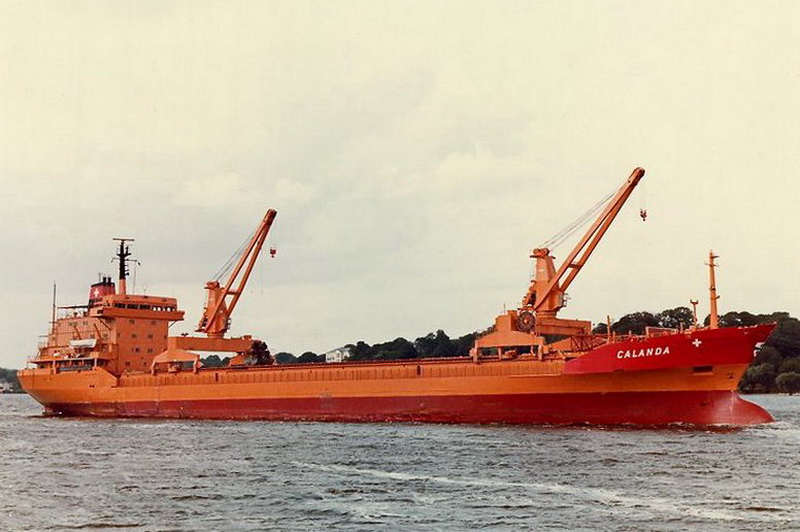
Auf der Elbe vor Hamburg / On the River Elbe near Hamburg
Bildherkunft / Photosource: © Arwed H. Kubisch Hamburg |
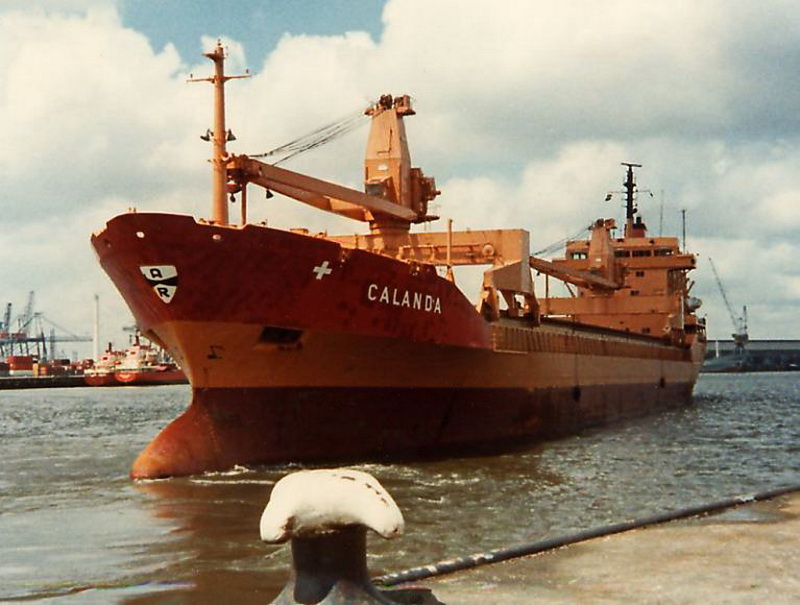
Bildherkunft / Photosource: © Unbekannt / Unknown / © SwissShips-Collection
|
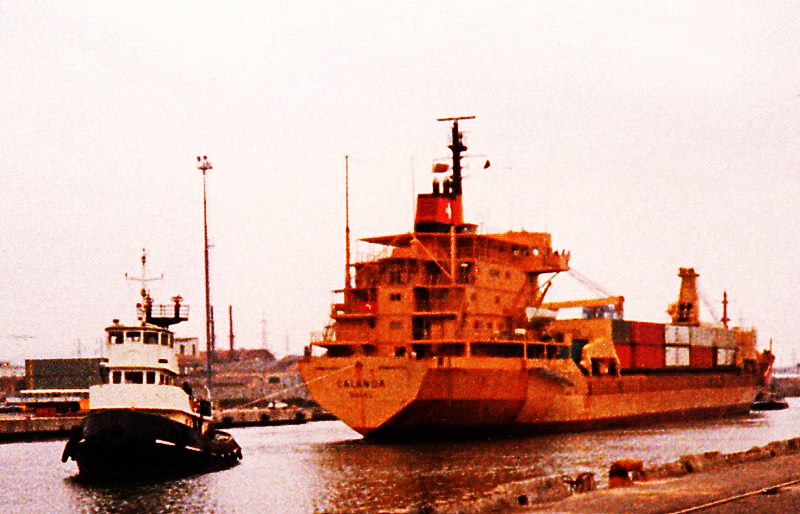
Bildherkunft / Photosource: © Unbekannt / Unknown / © SwissShips-Collection
|
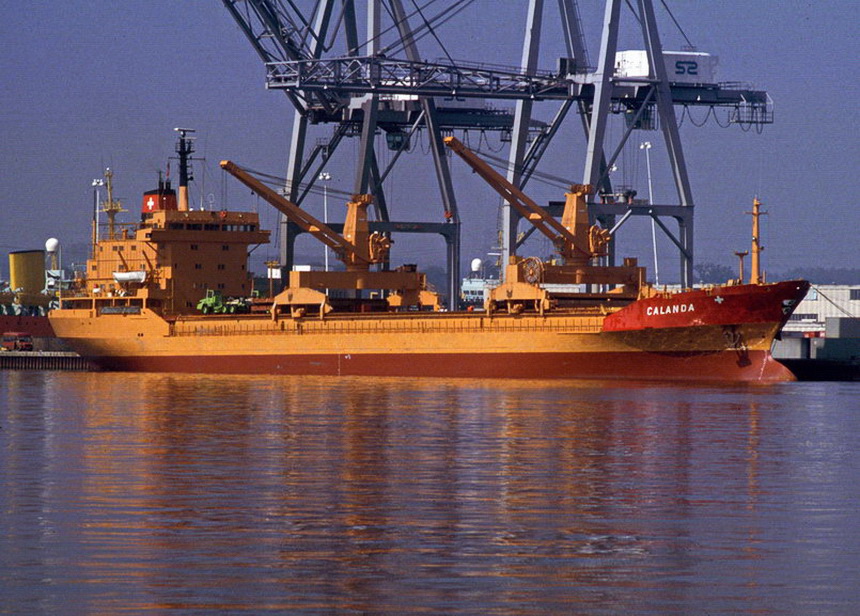
Southampton Juni / June 1984
Bildherkunft / Photosource: © Brian Fisher |
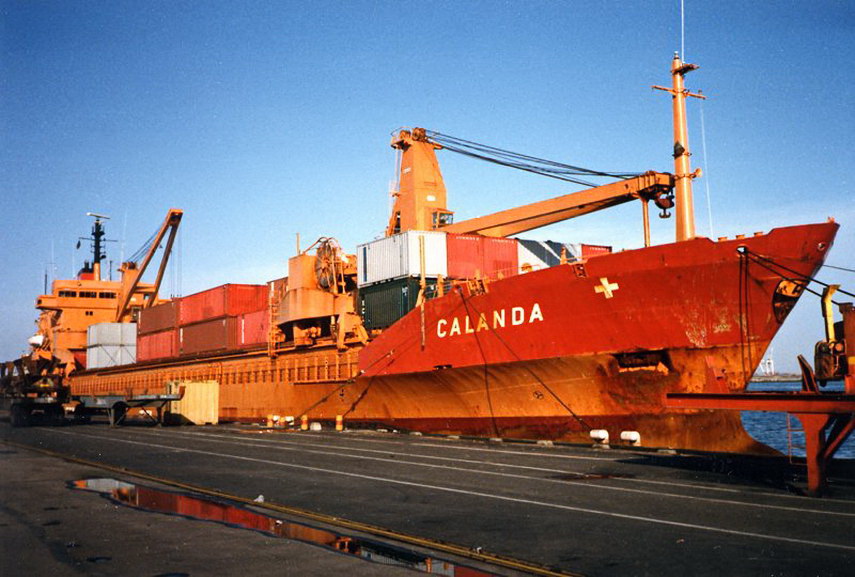
1986 an der Pier von Le Havre / Frankreich / 1986 on the pier of Le Havre / France
Bildherkunft / Photosource: © Jürg Signer
|
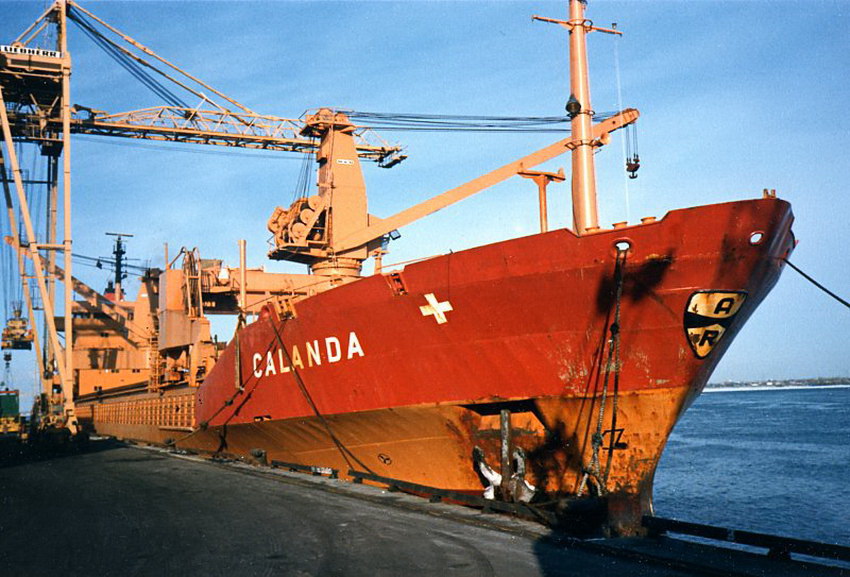
1986 an der Pier in Montreal / Kanada / Frankreich / 1986 at the pier in Montreal / Canada
Bildherkunft / Photosource: © Jürg Signer
|
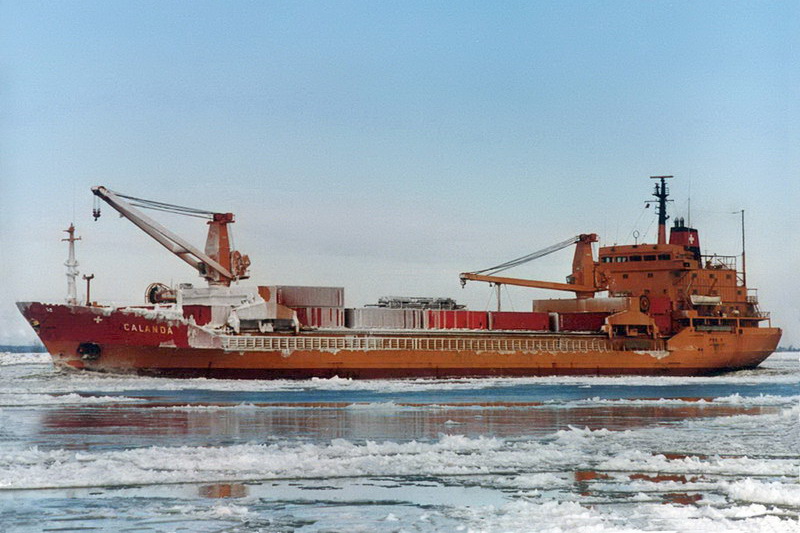
Auf dem St. Lorenz Strom in Canada 31.01.1986 / On the St. Lawrence River Canada on 31.01.1986
Bildherkunft / Photosource: Marc Piché / © SwissShips / MB-PhotoCollection |
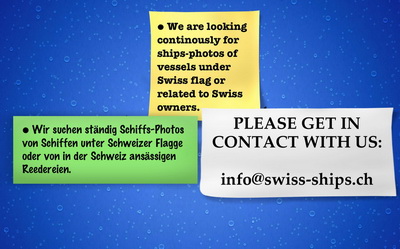
Wir suchen Fotos / Photographs wanted
Bildherkunft / Photosource: © SwissShips / FotoMar
|
|
Diverse Photos
Bildherkunft / Photosource: © Schweizerische Reederei und Neptun AG (SRN) Basel
|
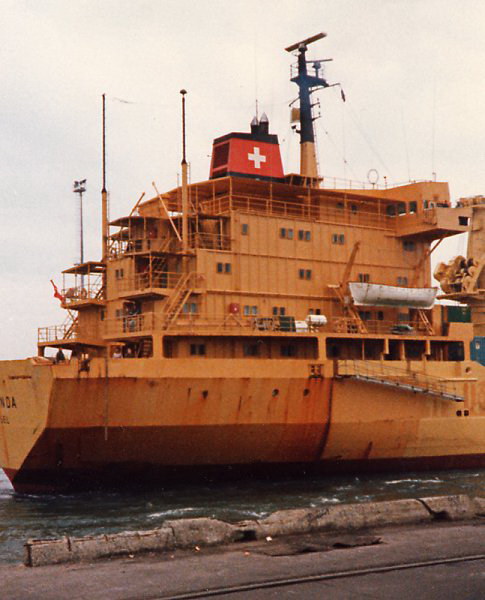
Bildherkunft / Photosource: © Schweizerische Reederei und Neptun AG (SRN) Basel |
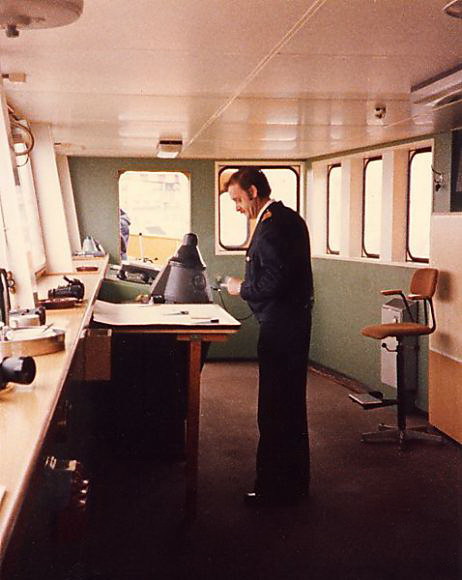
Chiefmate Mirko Mikulcic
Bildherkunft / Photosource: © Schweizerische Reederei und Neptun AG (SRN) Basel |
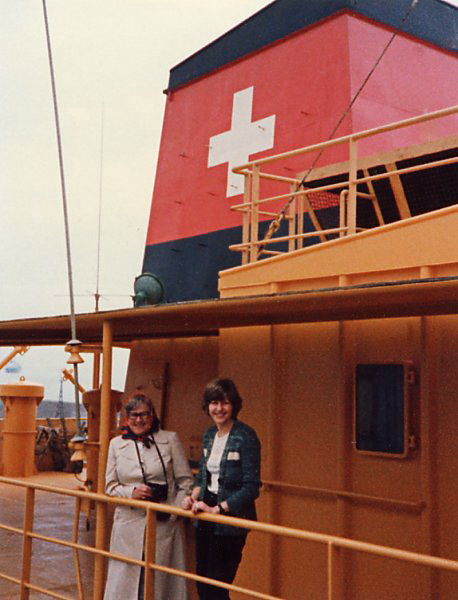
Laut Schiffsfunkerin Rosmarie Wyss (rechts im Bild) 1980 auf der Fahrt von Neapel nach Genua / According to ship's radio operator Rosmarie Wyss (right) in 1980 on the journey from Naples to Genoa
Bildherkunft / Photosource: © Schweizerische Reederei und Neptun AG (SRN) Basel |
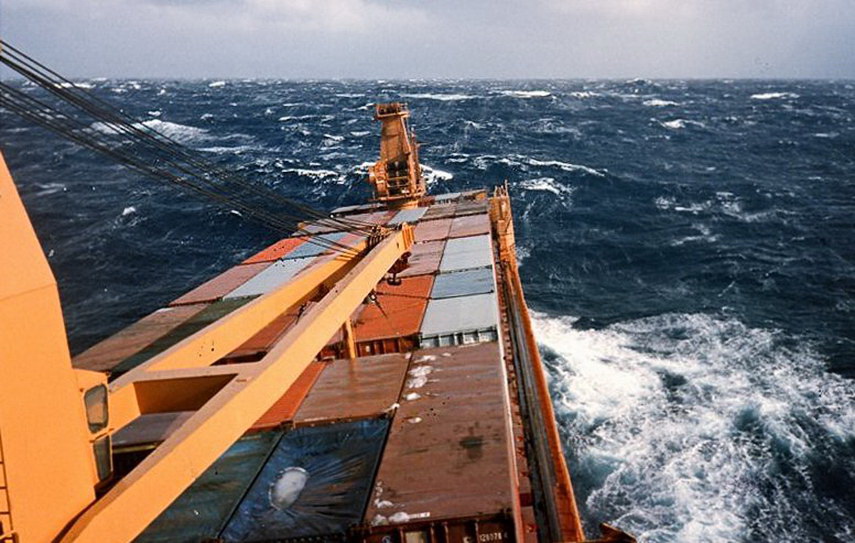
1986 unterwegs bei schwerer See im Nordatlantik / 1986 underway in heavy seas in the North Atlantic
Bildherkunft / Photosource: © Jürg Signer |
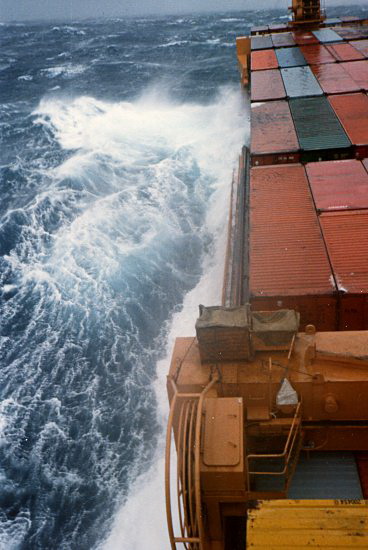
1986 unterwegs bei schwerer See im Nordatlantik / 1986 underway in heavy seas in the North Atlantic
Bildherkunft / Photosource: © Jürg Signer |

1986 am Pier in Montreal / Kanada / 1986 on the pier in Montreal / Canada
Bildherkunft / Photosource: © Jürg Signer |
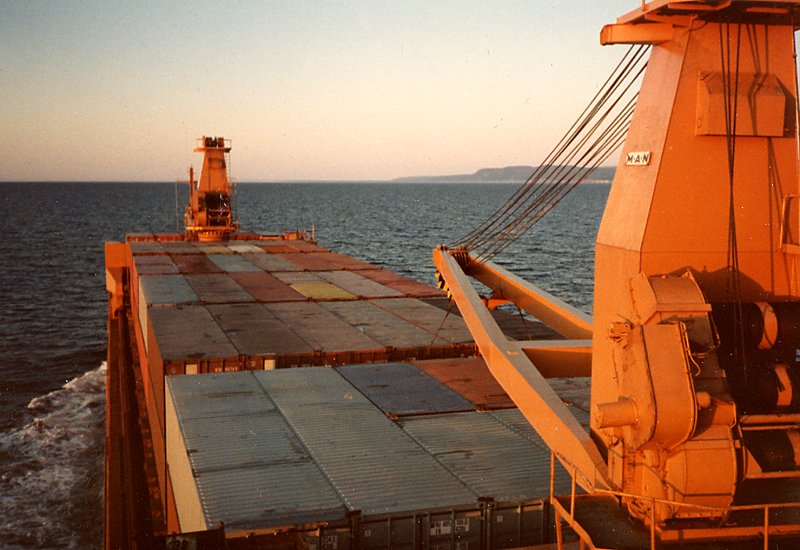
1986 unterwegs auf See / At sea 1986
Bildherkunft / Photosource: © Jürg Signer |
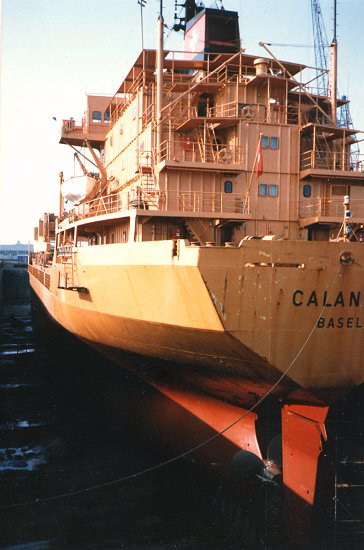
1986 auf der Werft in Vlissingen / Holland / 1986 at the shipyard in Flushing (Vlissingen) / Holland
Bildherkunft / Photosource: © Jürg Signer |
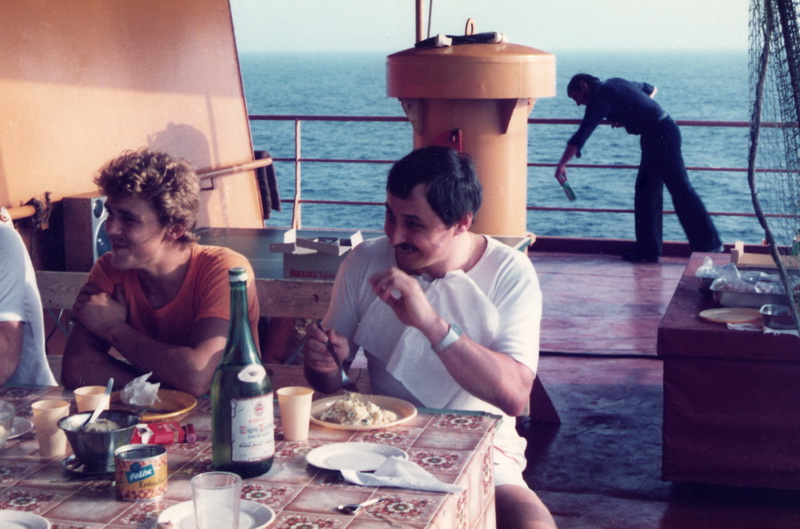
Crew (?wer ist es?)
Bildherkunft / Photosource: © Andreas Schlatterer |
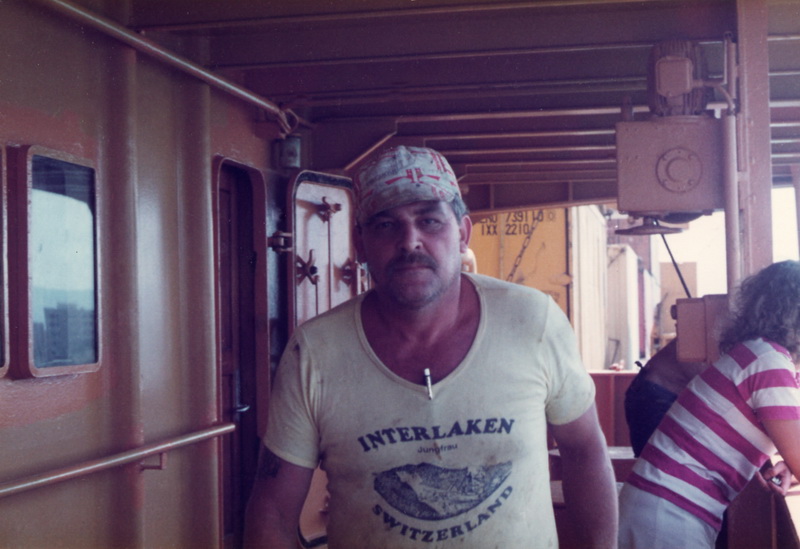
Crew (?wer ist es?)
Bildherkunft / Photosource: © Andreas Schlatterer |
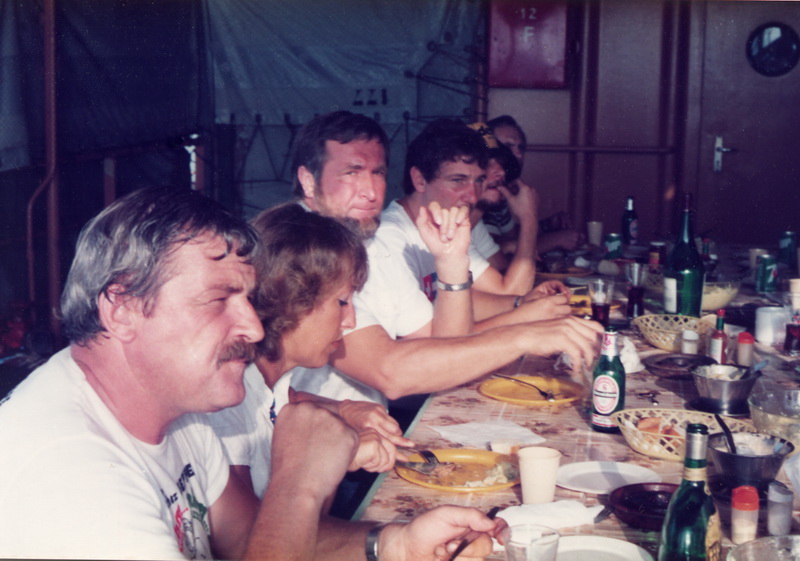
Crew (?wer ist es?)
Bildherkunft / Photosource: © Andreas Schlatterer |
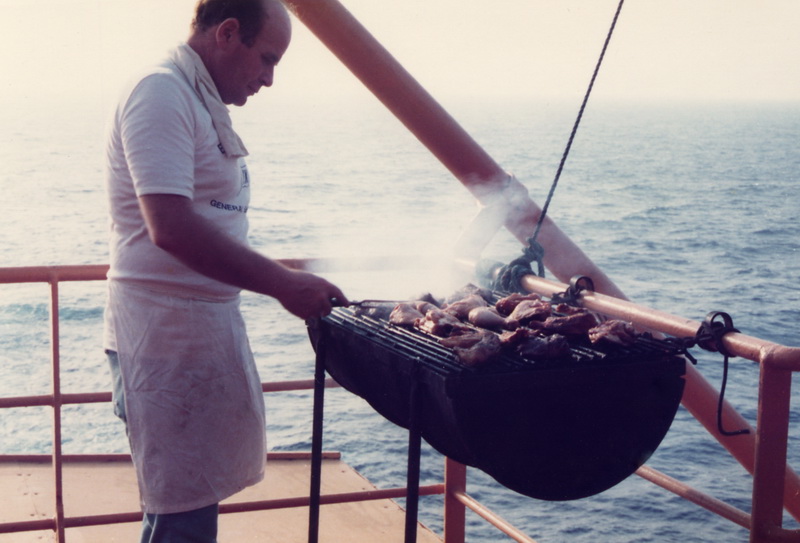
Koch Max Zbinden
Bildherkunft / Photosource: © Andreas Schlatterer |

Wir suchen Fotos / Photographs wanted
Bildherkunft / Photosource: © SwissShips / © FotoMar
|
|
vorher als / previously as
Vor Lagos in Nigeria 1975 am Anker (Woermann Linie Charter) / At anchor off Lagos in Nigeria 1975 (Woermann Line Charter)
Bildherkunft / Photosource: © SwissShips / © MB-Foto
|
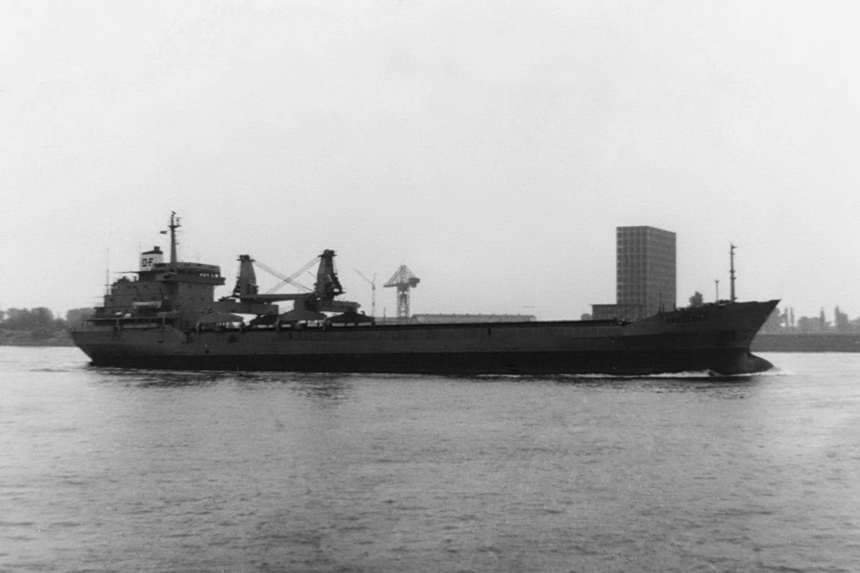
Schornsteinmarke / Funnel mark : Det Dansk - Franske Dampskibsselskab A/S København. Auslaufend Hamburg 1978 / Departing Hamburg 1978
Bildherkunft / Photosource: © Jörg Seyler
|
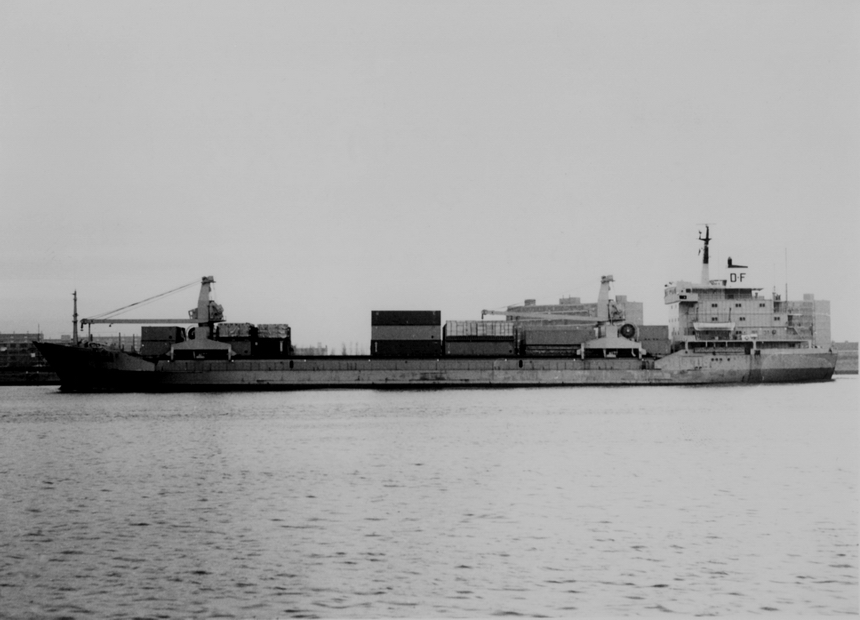
Schornsteinmarke / Funnel mark : Det Dansk - Franske Dampskibsselskab A/S København
Bildherkunft / Photosource: © Unbekannt / Unknown / © SwissShips-Collection
|

Wir suchen Fotos / Photographs wanted
Bildherkunft / Photosource: © SwissShips / © FotoMar
|
|
später als / later as |
|
später als / later as
15.01.2006 Istanbul
|
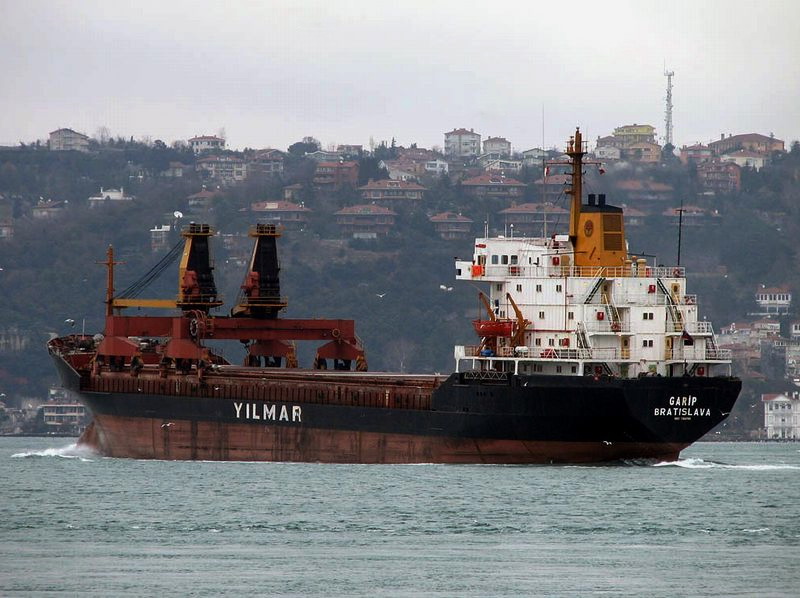
15.01.2006 Istanbul
Bildherkunft / Photosource: © Ilhan Kermen
|
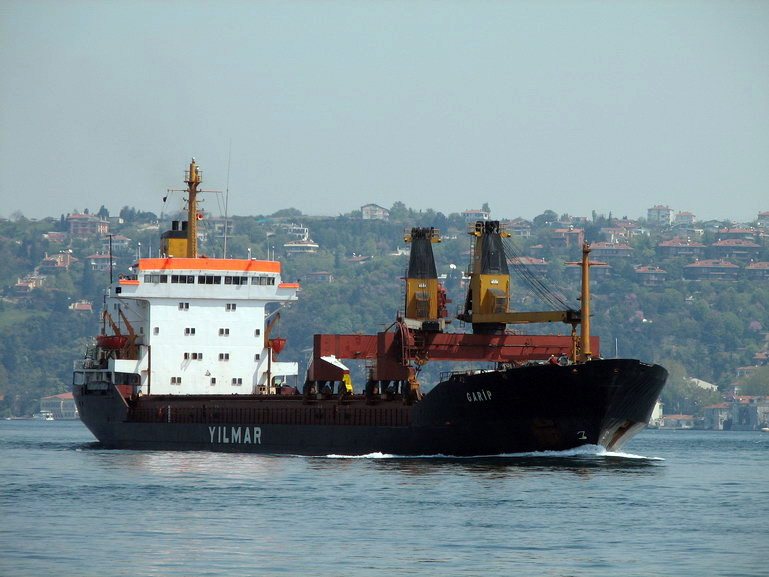
26.04.2006 Istanbul
Bildherkunft / Photosource: © Ilhan Kermen
|
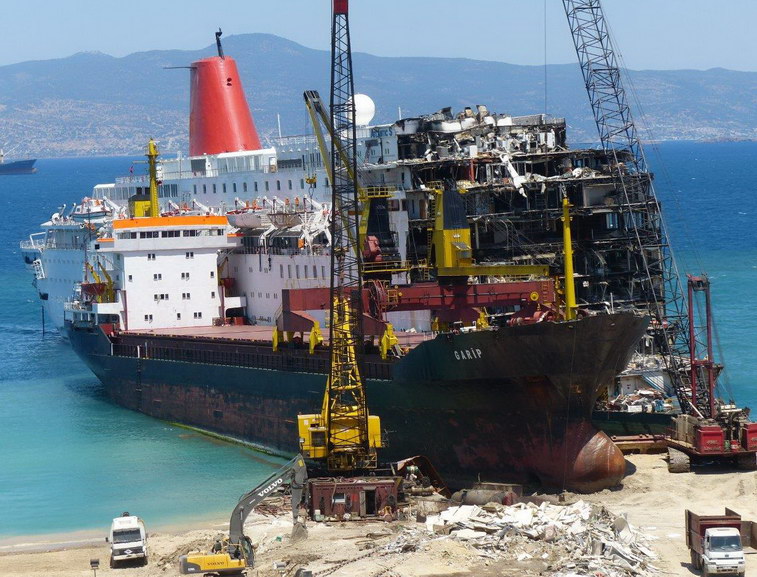
Auf den Strand von Aliaga zum Verschrotten im Juni 2013 / On the beach of Aliaga for scrapping in June 2013
|

Wir suchen Fotos / Photographs wanted
Bildherkunft / Photosource: © SwissShips / © FotoMar
|
|
|
